Stirling Castle
Stirling Scotland Building Photos Thumbnails Buildings Home
|
Stirling Castle Stirling Castle, located in Stirling, is one of the largest and most important castles, both historically and architecturally, in Scotland. The castle sits atop Castle Hill, an intrusive crag, which forms part of the Stirling Sill geological formation. It is surrounded on three sides by steep cliffs, giving it a strong defensive position. Its strategic location, guarding what was, until the 1930s, the farthest downstream crossing of the River Forth, has made it an important fortification from the earliest times. Most of the principal buildings of the castle date from the fifteenth and sixteenth centuries. A few structures of the fourteenth century remain, while the outer defenses fronting the town date from the early eighteenth century. Several Scottish Kings and Queens have been crowned at Stirling, including Mary, Queen of Scots, in 1543. There have been at least eight sieges of Stirling Castle, including several during the Wars of Scottish Independence, with the last being in 1746, when Bonnie Prince Charlie unsuccessfully tried to take the castle. Photo 1379, May 2011 |
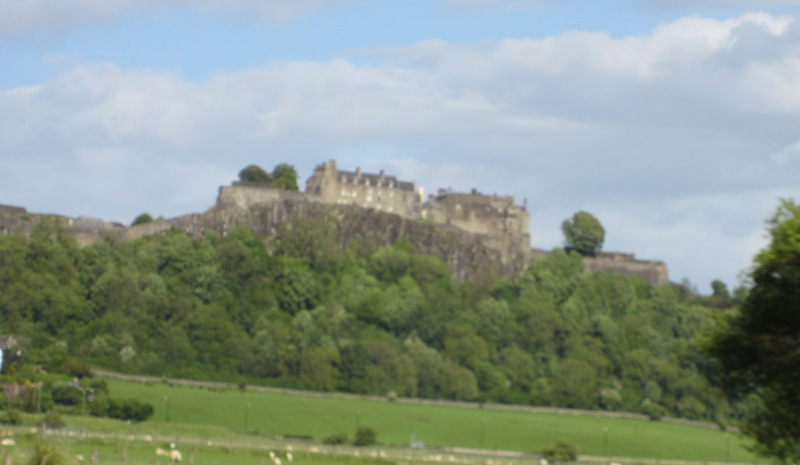
|
|
Gatehouse of Stirling Castle The gatehouse of Stirling Castle providing entry from the outer defences to the castle proper was erected by King James IV, and was probably completed around 1506. It originally formed part of a Forework, extending as a curtain wall across the whole width of Castle Hill. At the centre is the gatehouse itself, which now stands to less than half its original height. The round towers at the outer corners rose to conical roofs, with battlements carried around the tops of the towers. These were flanked by more round towers, of which only traces now remain, and mirrored by further rounds at the rear of the gatehouse. The overall design, as drawn by John Slezer in 1693, shows French influence, and has parallels with the forework erected at Linlithgow Palace. Like the Linlithgow structure, the Forework was probably intended more for show, evoking the "age of chivalry", than for defence, as it would have offered little protection against contemporary artillery. Photo 1348, May 2011 |
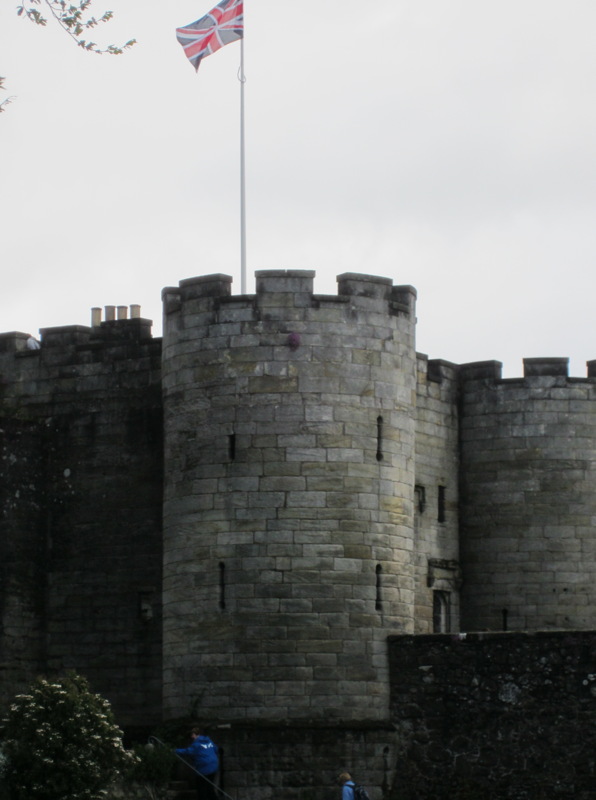
|
|
Great Hall of Stirling Castle On the east side of the Inner Close is the Great Hall, or Parliament Hall. This was built by James IV following on from the completion of the King's Old Building in 1497, and was being plastered by 1503. Described as "the grandest secular building erected in Scotland in the late Middle Ages", it represents the first example of Renaissance-influenced royal architecture in that country. It was worked on by a number of English craftsmen, and incorporates some English design ideas, being comparable to Edward IV's hall at Eltham Palace, built in the late 1470s. It includes Renaissance details, such as the intersecting tracery on the windows, within a conventional medieval plan. Inside are five fireplaces, and large side windows lighting the dais end, where the king would be seated. It is 138 by 46.75 ft across, making it the largest such hall in Scotland. Plaque on Great Hall: 'c. 1503. The largest great hall built in medieval Scotland. It was used for great occasions of state before being turned into a barracks in the 1790's. Following a lengthy restoration programme, it was reopened by Queen Elizabeth in 1999.' Photo 1346, May 2011 |
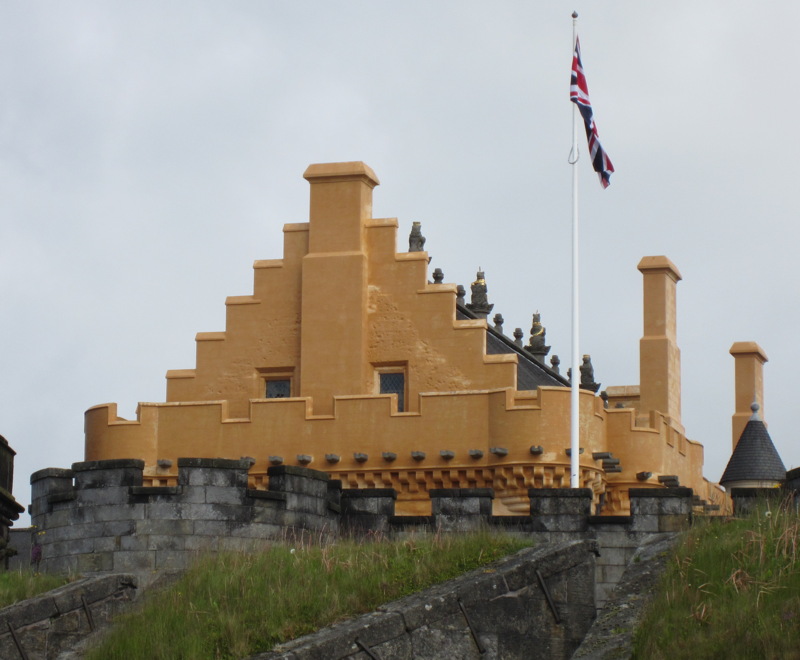
|
|
Part of Great Hall, Stirling Castle
Photo 1350, May 2011 |
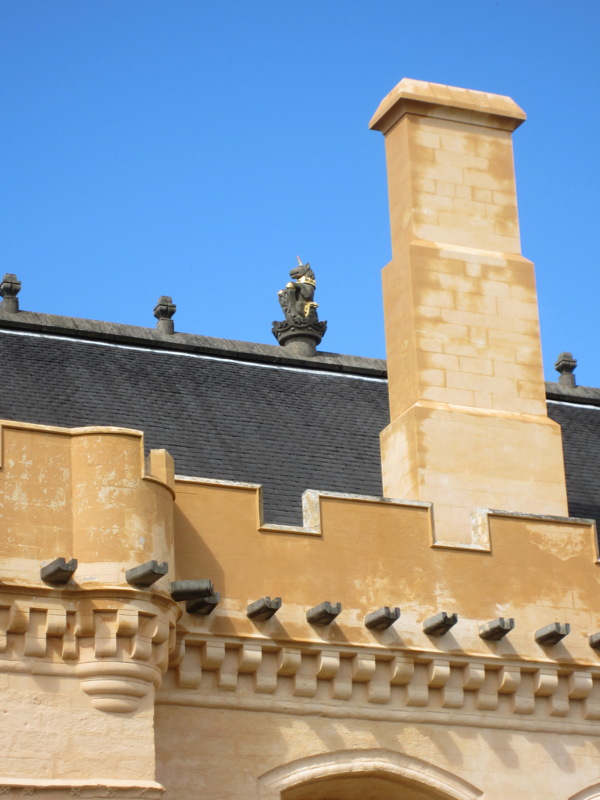
|
|
Great Hall of Stirling Castle on the right and Chapel Royal on the left The Chapel Royal, the collegiate chapel established by James IV in 1501 lay between the King's Old Building and the Great Hall, but was further south than the present building. This was the chapel in which Queen Mary was crowned in 1543. However, when James VI's first son, Prince Henry was born in 1594, it was decided to rebuild the chapel as a suitable venue for the royal christening. The new building was erected within a year, and was moved north to improve access to the hall. The building, with its Italianate arched windows, was the work of the Royal Master of Works William Schaw. Photo 1354, May 2011 |
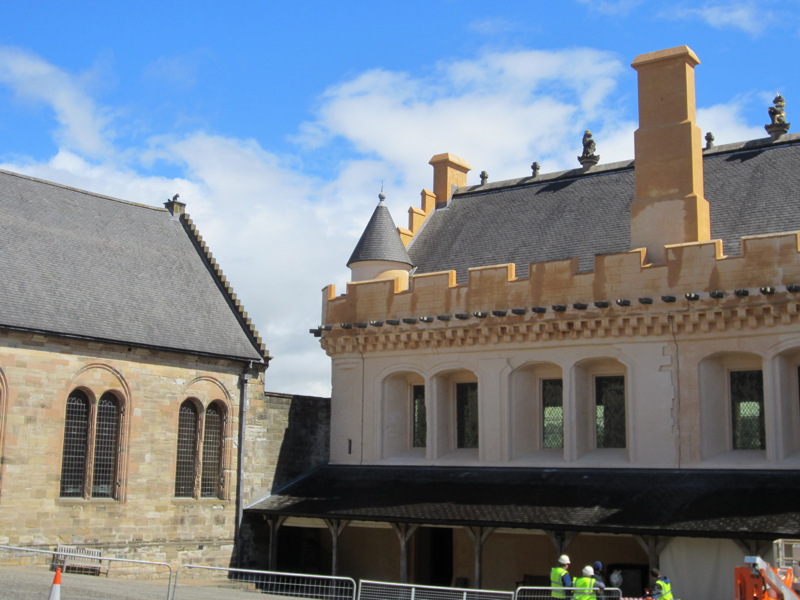
|